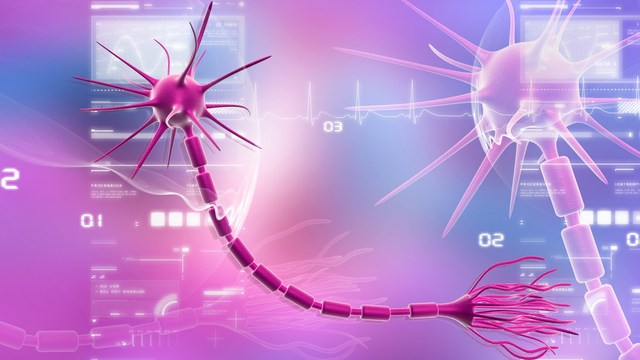Amyotrophic Lateral Sclerosis, also known as Lou Gehrig’s Disease or ALS, is a progressive, degenerative disease of the nerves that control voluntary movement. This disease results in total immobility and eventually death.
Patients with ALS often notice early symptoms like abnormal clumsiness, dropping things, or catching the toe of the foot as if the foot was too heavy to lift. As the disease progresses, the nerves degenerate so that signals from the brain are not able to reach the intended muscle. Because the muscles are not receiving instructions to move, they become weakened.
Movement becomes increasingly slow and difficult, then impossible as the body is cut off from the brain. The result is an active mind trapped in a body that cannot respond. Speech becomes clumsy, then so slurred that words are unrecognizable. Swallowing becomes increasingly difficult, until the risk of choking makes eating and drinking unwise and patients must be fed through a tube directly into the stomach. In addition, breathing, which is an automatic occurrence for most people, becomes a deliberate, energy-consuming act of will.
People with ALS become totally dependent on others to take care of all their needs. Although they lose the ability to move their legs, arms, hands, and fingers, they retain the ability to feel. So a fly buzzing around an ear or an itch that can’t be scratched can become a kind of torture.
When people think about muscular dystrophy, they often picture young children or teenagers. But reaching an adult age does not provide protection from muscular dystrophy. ALS usually strikes in late middle age, with the mid-50s being the average. Men are slightly more likely to develop ALS than women. Life expectancy from the time of diagnosis is typically three to five years.
Research is on-going to find a cure for ALS and a variety of other neuromuscular diseases, but at the present time, there is no cure.
Sources:
This article is the result of conversations with ALS patients and their families as well as information available from the Muscular Dystrophy Association.






Add a Comment2 Comments
Finding a cure for neuromuscular diseases is the goal of the Muscular Dystrophy Association. The Jerry Lewis MDA Labor Day Telethon is coming September 5 & 6, 2010. The money raised during the telethon will help fund research that will one day find a cure for ALS and other diseases. If you would like to make a donation, watch the telethon for opportunities to call in or make a secure donation online any time at mdausa.org.
August 25, 2010 - 4:52pmThis Comment
Denise, a very nice layman's explanation of ALS. Too often scientific jargon, which has its place in the discussion to be sure, clouds the public's understanding of the disease and zeal to participate in finding a cure. We struggle to walk the line with our blog as well, blog.prize4life.org.
August 25, 2010 - 12:49pmThis Comment